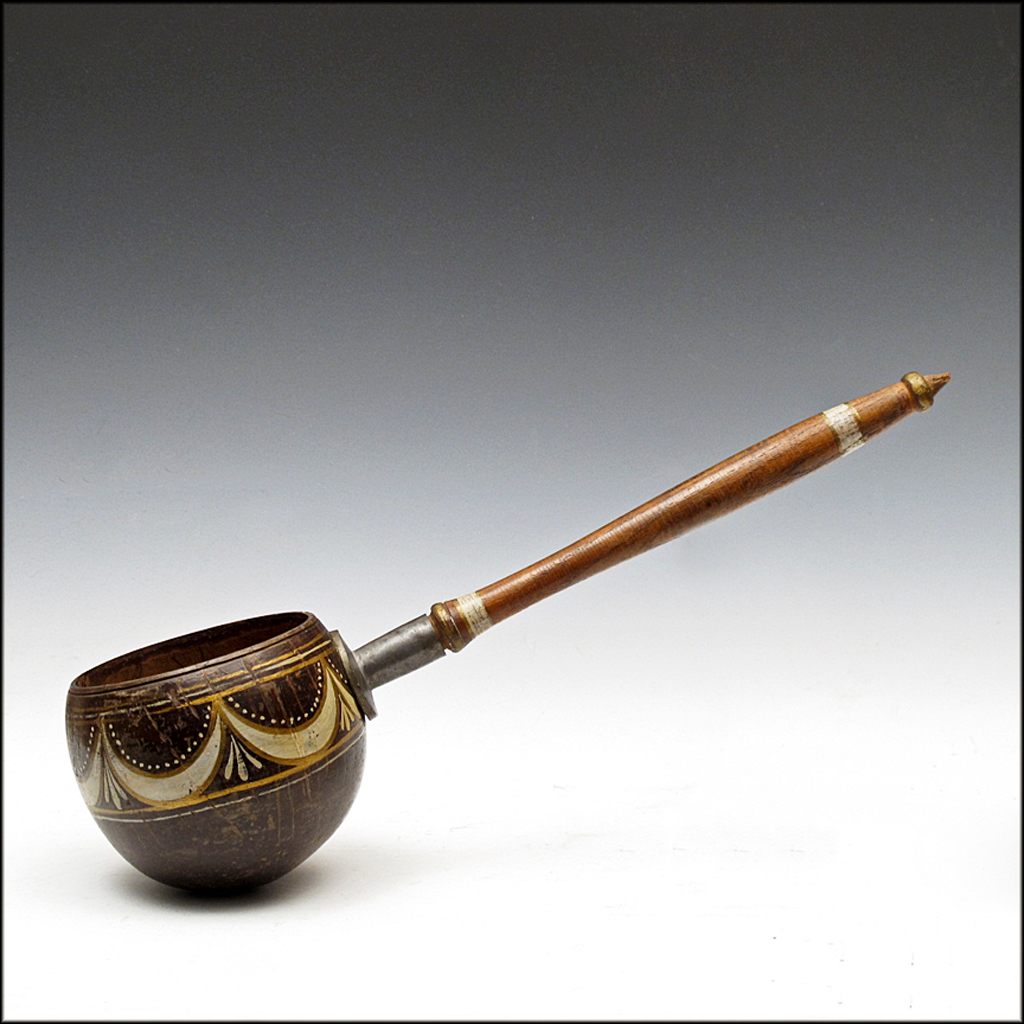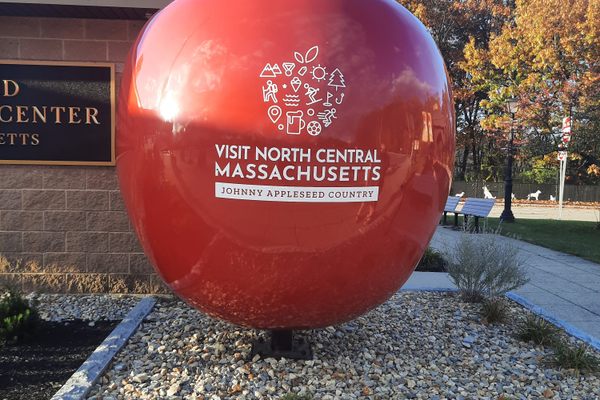Why 19th-Century Americans Drank From Coconut Shells
A different kind of coconut water craze.

In 1876, an American journalist describing coconut palms casually observed that “all of us have doubtless drunk from the cocoanut dipper made by sawing off the top of the shell, and riveting a wooden handle to the cup.”
Drinking from coconuts or their shells may be a foreign experience for most Americans today. But for over 100 years, a coconut dipper was an essential tool. On a daily basis, 19th-century Americans drank water from communal dippers made of coconut shells. They were disposable housewares, beloved heirlooms, and symbols of family and community.
People in areas with native coconut palms, of course, have used coconut-shell dippers and ladles since prehistoric times. Yet coast to coast, in a pre-plumbing United States, coconut dippers were remarkably ubiquitous. The dippers were simple: half a coconut shell, attached to a handle. But their construction varied widely: Coconut dippers commonly sported metal rims and elaborate handles of wood or whale ivory.
Whether constructed with plain or luxurious handles, coconut shells were used because they were inexpensive, not because they were exotic. Coconut was a popular ingredient in 19th-century American desserts, and the shells were a commercial byproduct. When polished, coconut shell looked like an attractive hardwood. Although the shells cracked easily, they were cheap to replace. Thus, the coconut dipper is an example of early, disposable houseware.

The demand for coconut dippers meant that dedicated coconut dipper factories thrived from the mid-Atlantic to southern New England. Woodworking shops produced coconut dippers too. These businesses shipped dippers all over the country by steamboat and rail, and settlers brought dippers on their wagon trains. In 1880, a thirsty traveler in Alabama reported that he was handed water in a coconut dipper made in Connecticut. Further west, Manifest Destiny traveled with coconut dipper in hand.
So what made these dippers so central to American culture? In one word: water. Until the 20th century, moving water indoors and to various parts of the house was an onerous, daily chore. Women took up this task, whether free, servant, or enslaved. In story after story, they insist on the coconut dipper’s central roles in kitchens. In 1891, a woman in Wichita, Kansas, noted that a bucket and coconut dipper set was a “convenient supply of fresh drinking water” and declared that there was “a peculiar charm and feeling of health and purity about it.” In one story, a woman preparing to leave the kitchen she’s cooked in for a generation mourns that “the cocoanut dipper … had done service for twenty years” too. In another, teens imagine a dream kitchen with silver rimmed dippers. Stories and personal reminisces both report that water from a coconut dipper was special at the same time as it was everyday.
It wasn’t just women who held coconut dippers in high esteem. In the Red-Bridge Neighborhood by Maria Louise Pool, a fictional beau—intent on demonstrating his readiness to support a family—wrenches a pail from beside its coconut dipper and frantically races to fill it from a well before proposing to his beloved. When the Providence Journal feted a retiring colleague, the employees also paid tribute to a beloved coconut dipper. Even after it had stopped being used, a reporter wrote that the coconut dipper was “one of the established institutions of the place.” Schoolhouse janitors remember students drinking from the schoolhouse dipper, and factory workers remember drinking from coconut dippers.
People didn’t just drink from coconut dippers: They shared them. Family members shared dippers. Schoolchildren shared dippers. Co-workers shared dippers. Each of these communities grew attached to their dippers as symbolic of this sharing and community.

It’s easy to forget just how radically our access to drinking water changed between roughly 1875 and 1925. As the nineteenth century progressed, water was piped into one city after the next. But even then, many residents drew water street-side from public fountains—until housing was retrofitted with pipes or newly built. In towns and in the countryside, water came from public or private wells, streams, and rivers. Affordable electric pumps for wells helped increase water access in rural areas in the later nineteenth century. The wealthy always had faster, easier access to indoor drinking water than others. Yet by the second and third decades of the twentieth century, water arrived with the twist of a tap inside most Americans’ homes.
As indoor plumbing spread, people stopped using coconut dippers. Today, most Americans give little thought to their water glasses, since they no longer have to haul water in buckets. It takes an emergency like the post-hurricane chaos in Puerto Rico or the water crisis in Flint, Michigan, to remind people of the labor that can be required to access clean water. So the next time you fill a water glass, consider pausing to remember the coconut dipper.
Gastro Obscura covers the world’s most wondrous food and drink.
Sign up for our email, delivered twice a week.



























Follow us on Twitter to get the latest on the world's hidden wonders.
Like us on Facebook to get the latest on the world's hidden wonders.
Follow us on Twitter Like us on Facebook